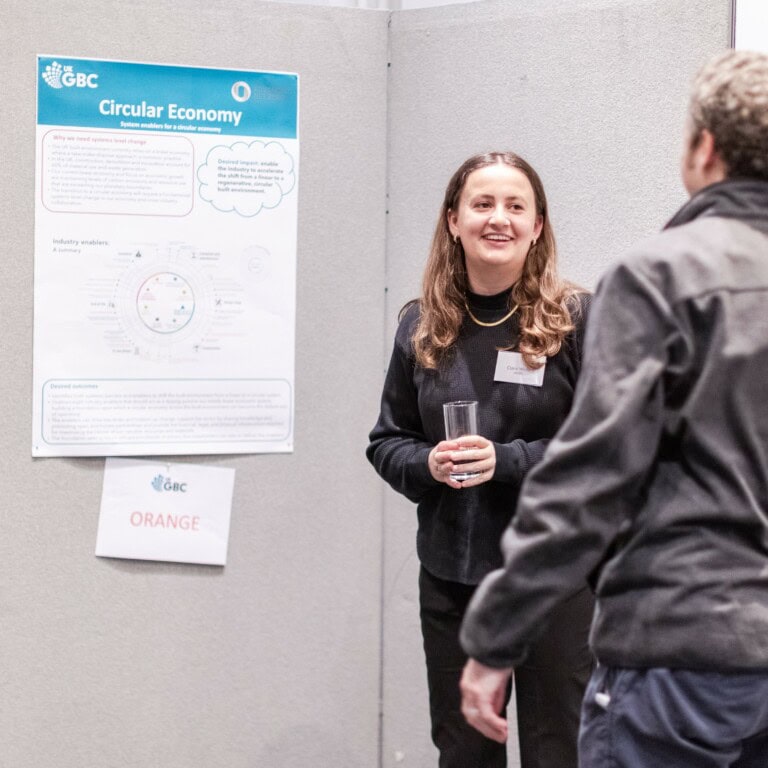Embodied Carbon: Where are we now?

Last month, we attended the UK Green Building Council’s (UK-GBC) Midlands Network at Linkcity’s Birmingham office, to discuss the growing significance of embodied carbon in the built environment.
The event was chaired by Natalia Ford of UK-GBC with attendees from Cundall (Tim Stidwell & Paul Chatwin), Architype (Jessica Taylor), Lovells (David Hampson), Linkcity (Graham Lambert), Turner & Townsend (Gareth Brown) and Associated Architects (John Christophers).
Embodied Carbon (EC) is, to most, a relatively new topic. There is currently no legislation forcing industry to carry out EC assessments on their projects, but the group all agreed that it is both important and likely to come soon.
It was great to see that UK-GBC had already created a clear publication, ‘Embodied Carbon: Developing a Client Brief’ on the topic which allows clients to drive EC performance by providing accessible information and guidance. This document includes text that can be cut and pasted to create a specification for EC assessments.
As a group, we generally felt up to speed on operational energy, and observed how this has been driven by legislation and other drivers such as PassivHaus. We were also conscious that, as operational emissions are reduced, the embodied carbon element of a built asset becomes a larger slice of the overall ‘carbon pie’. To meet UK carbon targets as set by COP21, which means a net zero economy by the second half of this century, and tackle the global climate change challenge, we need to do our part addressing both operational and embodied carbon.
We discussed the challenges that are currently likely to prevent us from carrying out EC assessments on our projects – these are not insurmountable challenges, but are real issues such as:
- No legislation
- No planning requirements
- Financial incentives are unknown (costs are perhaps clearer!)
- Benefits in reduced carbon falls to who? – developer? contractor? landlord?
In order to push embodied carbon up the agenda, the group agreed that we must, at least, raise awareness. We found out during discussion that a BSEN standard exists (15978), and tells you what an EC assessment must contain, but does not necessarily tell you how…this is coming in September 2017 when we will have a RICS standardised approach that we can all adopt.
So now is the time when we should, per operational energy, develop a better understanding of what a low carbon building or project looks like. We will soon have consistent benchmark data to go with running costs. We discussed that this benchmark could be a kgCO2e/m2/year of design life, to allow for 60-year or 100-year design lifetime, and therefore provide a fair comparison. But, most importantly, we need a financial incentive or a business case to help clients understand that specifying or procuring low carbon is potentially cost-effective, rather than the default view that it is expensive.
We also saw a vision of the future (maybe) where we use software tools such as those used for BIM to readily assess embodied carbon which could be used as part of a legislation such as Part L. (See the figure below).
![]()
So, in conclusion, what we should all do in the property professions is not go on a ‘carbon’ diet, but have a change in ‘carbon’ lifestyle.
Because of the roundtable event we felt more could be and should be done. The challenge is bringing more people on board to see the real benefits in considering EC assessments as early as possible on their projects.
Authors: Paul Chatwin (Cundall) and Graham Lambert (LinkCity)
Related
The Path to Net-Zero: How landlords can overcome cost concerns and lead the way in sustainability

How energy efficiency is creating environmental and economic value in cities

Using the tools we have to build a circular economy

Responsible offsetting and our pathway to net zero

